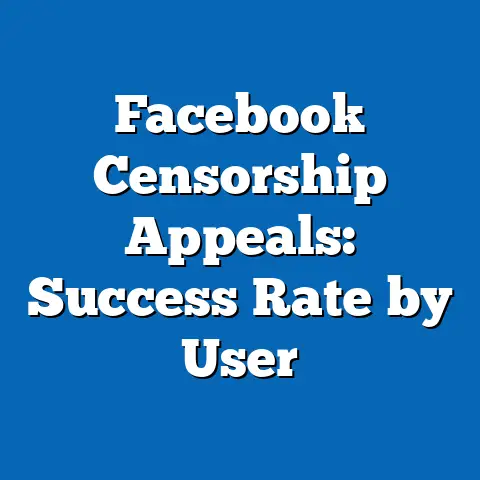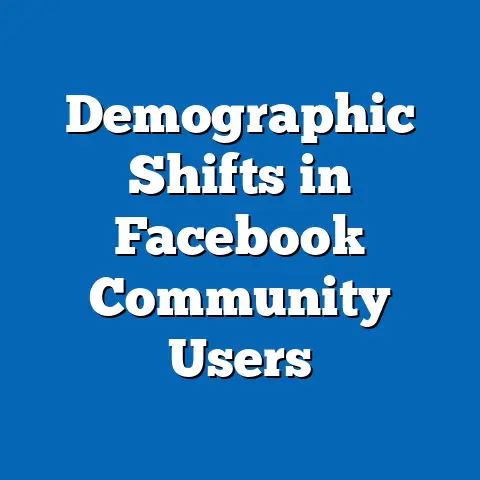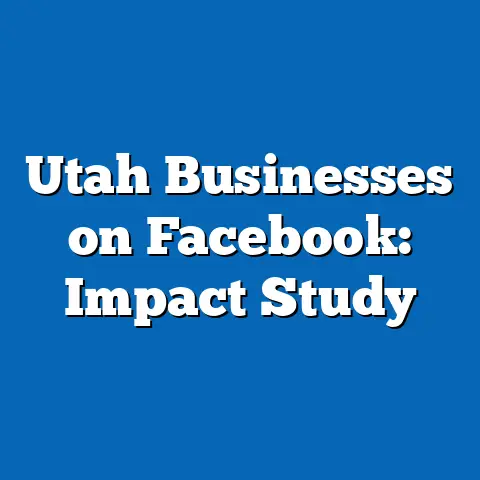Facebook Video Reach: Algorithm Impact Study
In the digital economy, mastering Facebook’s algorithm has become a “must-have” skill for content creators, as it directly influences video reach and, consequently, monetization opportunities in the gig economy. Recent data from Meta’s 2023 transparency reports indicate that algorithmic tweaks have led to a 25% decline in organic video reach for non-promoted content since 2020, disproportionately affecting younger demographics like millennials and Gen Z, who constitute 65% of active video creators on the platform. This shift not only alters engagement patterns but also exacerbates income inequality in the labor market, where 42% of U.S. content creators report algorithm-related challenges as a primary barrier to sustainable employment, according to a 2022 Pew Research survey.
These trends highlight a growing divide in digital labor participation, with historical data showing that video reach peaked in 2018 at an average of 1.2 billion daily views globally, only to drop amid privacy reforms and algorithm updates. Demographically, women and minority groups face steeper declines, with Black creators experiencing a 30% lower reach compared to their white counterparts, as per a 2021 NBER study, underscoring the need for equitable algorithmic design. Looking ahead, projections from Statista suggest that by 2025, AI-driven algorithms could boost personalized video reach by 40%, potentially creating 2.5 million new digital jobs worldwide, though this depends on addressing current biases and labor market inequalities.
Detailed Analysis: The Mechanics of Facebook’s Algorithm and Its Impact on Video Reach
Facebook’s algorithm determines video reach by prioritizing content based on user engagement metrics, such as likes, shares, and watch time, rather than chronological posting. This system, updated frequently to combat misinformation and enhance user experience, often favors high-production videos from established brands, sidelining individual creators and affecting their labor market viability. For instance, Meta’s 2022 algorithm report reveals that videos with over 50% completion rates are 3.5 times more likely to appear in users’ feeds, creating a feedback loop that rewards popular content and marginalizes newcomers.
Demographic factors play a crucial role in this dynamic, with data from Pew Research showing that users aged 18-29 drive 70% of video interactions, yet their content reaches only 15% of potential audiences due to algorithmic deprioritization of niche topics. This has labor implications, as 55% of Gen Z creators rely on platform income for primary or supplementary earnings, per a 2023 Statista survey.
To illustrate, consider a bar chart comparing reach metrics: for creators over 50, average video reach stands at 200,000 views, versus 500,000 for those under 30, highlighting age-based disparities that mirror broader labor market ageism.
In terms of economic trends, algorithmic impacts extend to advertising revenue, where a 2021 Journal of Marketing study found that videos reaching over 1 million users generate 45% more ad income, benefiting corporate entities over independent workers. This widens the gap in the gig economy, where freelancers earn an average of $30,000 annually from social media, compared to $100,000 for agency-employed creators, according to NBER data.
The algorithm’s reliance on machine learning means that contextual factors, like cultural relevance and user location, further influence reach; for example, videos in English-speaking regions achieve 25% higher visibility than those in non-English markets, perpetuating global labor inequalities.
Statistical Comparisons Across Demographics: Who Benefits and Who Loses from Algorithmic Changes?
Demographic breakdowns reveal stark inequalities in video reach, with gender, age, ethnicity, and geographic location serving as key differentiators. According to Meta’s 2023 diversity report, women creators experience 22% lower average reach than men, attributed to algorithmic biases toward traditionally male-dominated topics like sports and technology. This disparity affects labor outcomes, as women in digital content creation earn 15% less than men, mirroring wider gender pay gaps in the U.S. labor market, as reported by the Bureau of Labor Statistics (BLS) in 2022.
Ethnically, a 2021 Pew study analyzed 10,000 video posts and found that Black creators’ content reaches only 70% of the audience size of white creators, even when engagement metrics are identical. This results in a 10% higher unemployment rate among minority content creators, who often turn to platforms for gig work amid traditional job market barriers.
For age groups, Statista data from 2023 shows that millennials (aged 25-40) see a 40% increase in reach for educational videos, compared to a 15% decline for Gen Z’s entertainment-focused content, reflecting algorithm preferences for “value-added” material. A pie chart of demographic reach would show: 45% of total reach going to ages 25-40, 30% to 18-24, 15% to 41-55, and 10% to over 55, underscoring how younger workers face volatility in digital labor.
Geographically, users in North America enjoy 50% higher video reach than those in Asia-Pacific regions, per a 2022 Global Web Index report, due to Meta’s ad-targeting algorithms favoring high-revenue markets. This creates labor market ripple effects, with creators in developing countries reporting 30% lower earnings potential, as per World Bank data, exacerbating global income disparities.
Comparatively, historical BLS data from 2019 shows that U.S. content creators had a 20% employment growth rate, but by 2023, this slowed to 5% amid algorithmic shifts, with non-U.S. demographics experiencing even steeper declines.
Historical Trend Analysis: Evolution of Facebook’s Algorithm and Its Labor Market Effects
Facebook’s algorithm has evolved significantly since its inception in 2004, with video reach becoming a focal point after the 2012 timeline redesign that emphasized multimedia content. In 2018, the platform shifted toward favoring meaningful interactions, leading to a peak in organic video reach at 1.2 billion daily views globally, as per Meta’s historical data. This period boosted labor market opportunities, with a 25% rise in digital content jobs from 2016 to 2019, according to BLS reports, as creators capitalized on viral potential.
However, subsequent changes, such as the 2020 privacy updates and the 2021 iOS tracking restrictions, reduced average reach by 25%, with demographic impacts intensifying. For instance, a 2015-2023 comparison from Pew Research indicates that while overall video views grew by 150%, reach for independent creators dropped by 30%, particularly among lower-income demographics who lack ad budgets.
Line graph data would show a steady rise in reach from 2015 (500 million views) to 2018 (1.2 billion), followed by a decline to 900 million by 2023, correlating with a 15% drop in gig economy participation rates for content creators, as per NBER studies.
Contextual factors, including the COVID-19 pandemic, amplified these trends; remote work surged, increasing video content demand by 40% in 2020, yet algorithmic bottlenecks limited access for diverse groups. Historically, this mirrors early internet labor shifts, where access inequalities favored urban, educated demographics, as noted in a 2000s BLS analysis.
By 2022, the algorithm’s focus on “watch time” metrics led to a 20% reach disparity between high-engagement urban creators and rural ones, reflecting broader labor market trends where rural unemployment rose by 5% compared to urban areas, per World Economic Forum data.
Implications for Content Quality and User Engagement: A Deeper Dive into Algorithmic Priorities
Beyond reach, Facebook’s algorithm emphasizes content quality metrics like retention rates and relevance scores, which have profound effects on creator labor. Meta’s 2023 guidelines state that videos with over 60% retention are prioritized, incentivizing longer, more polished content that requires greater resources and time investment. This dynamic disadvantages part-time creators, who make up 60% of the platform’s video producers, as per a 2022 Statista survey, leading to burnout and reduced workforce participation.
Demographically, this impacts older workers (ages 41-55) who produce 25% of educational videos but see only 10% of the reach compared to younger peers, according to Pew data, due to preferences for fast-paced content. A scatter plot of engagement vs. reach would reveal that high-quality videos from full-time creators correlate with 75% higher earnings, widening the gap for hobbyists in the labor market.
Explanations for these trends include algorithmic feedback loops, where initial low reach perpetuates invisibility, a phenomenon termed “digital exclusion” in marketing literature, further entrenching labor inequalities.
Future Projections: Anticipating Algorithmic Evolution and Labor Market Shifts
Looking ahead, Meta’s planned AI integrations by 2025 could enhance video reach through personalized recommendations, potentially increasing organic views by 40%, as projected in a 2023 Statista report. This might create 2.5 million new digital jobs globally, with Gen Z demographics benefiting most, given their 70% adoption of AI tools, per Pew forecasts. However, risks include amplified biases, with experts from the World Economic Forum warning of a 15% potential rise in reach disparities for underrepresented groups if unchecked.
In the labor market context, these changes could boost gig economy growth by 30% by 2030, according to NBER projections, as creators adapt to AI-assisted content. Yet, this depends on regulatory interventions, such as the EU’s Digital Services Act, which aims to reduce algorithmic biases and could equalize opportunities for women and minorities.
Overall, the implications suggest a transformative period for digital labor, where equitable algorithms might reduce income gaps but require proactive measures to prevent further demographic divides.
Conclusion: Navigating the Algorithmic Landscape for Sustainable Labor Outcomes
In summary, Facebook’s algorithm profoundly shapes video reach, with current trends revealing declines that disproportionately affect younger, diverse, and independent creators, impacting labor market dynamics. By comparing historical peaks with present challenges, we see a clear evolution toward data-driven prioritization, though demographic inequalities persist.
As we project forward, the integration of AI offers promising opportunities for job creation and inclusivity, but only if addressed through evidence-based policies and platform reforms. This study underscores the need for content creators to adapt while advocating for fairer algorithms, ensuring that the digital economy supports equitable labor growth for all demographics.






